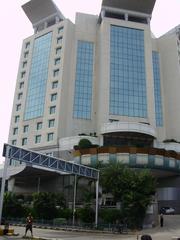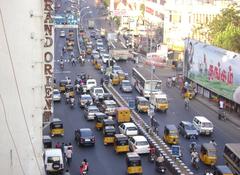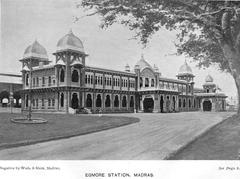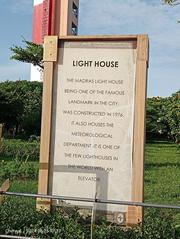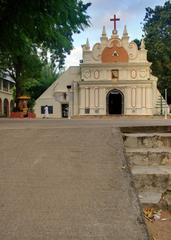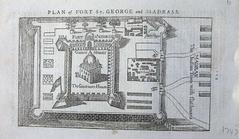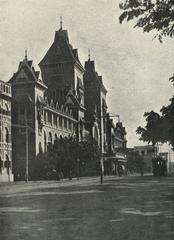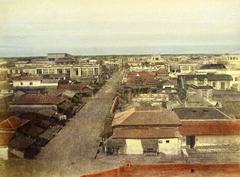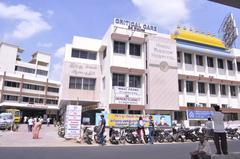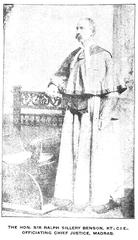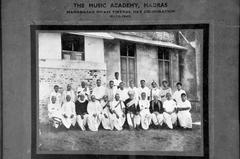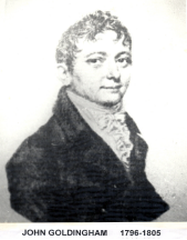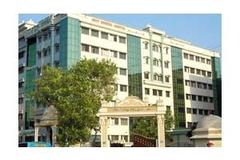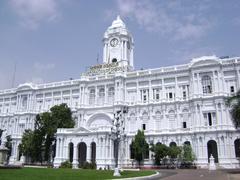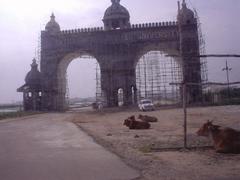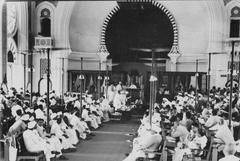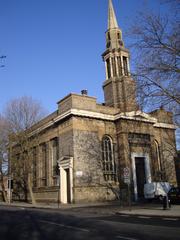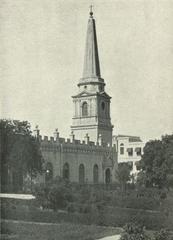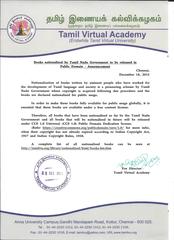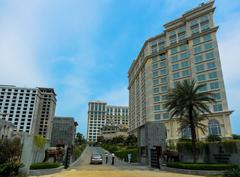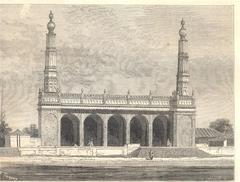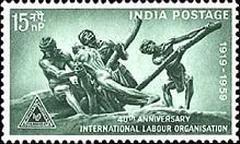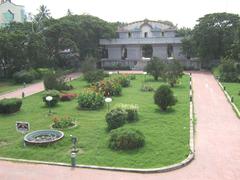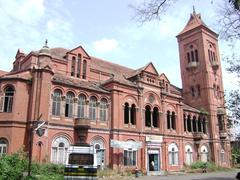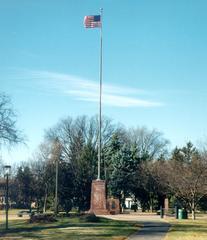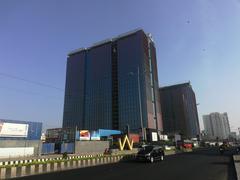Comprehensive Guide to Visiting Delhi Avenue, Chennai, India: History, Significance, Visitor Tips, and Everything Tourists Need to Know for a Memorable Experience
Date: 31/07/2024
Introduction
Delhi Avenue in Chennai is a microcosm of India’s rich historical tapestry and cultural diversity. Established during the British colonial period, this thoroughfare has evolved from a strategic colonial artery into a vibrant symbol of Chennai’s dynamic urban landscape. The avenue’s significance is deeply rooted in its early beginnings, tracing back to the establishment of Fort St. George by the British East India Company in 1644 (Wikipedia). Over the centuries, Delhi Avenue has witnessed the city’s transformation, marked by the development of extensive infrastructure and iconic architectural landmarks like the Ripon Building, which showcases a blend of colonial and traditional South Indian styles (TravelTriangle). Today, Delhi Avenue is more than just a road; it is a bustling hub that encapsulates the essence of Chennai’s rich heritage and modern dynamism. This guide aims to provide visitors with comprehensive insights into the historical significance, key attractions, and practical tips for exploring Delhi Avenue, ensuring a memorable and enriching experience.
Table of Contents
- Exploring the Rich History of Delhi Avenue, Chennai
- Visitor Tips
- Key Attractions Nearby
- Frequently Asked Questions (FAQ)
- Conclusion
Exploring the Rich History of Delhi Avenue, Chennai
Early Beginnings and Colonial Influence
Delhi Avenue, located in the bustling city of Chennai, India, has a rich history that dates back to the colonial era. The avenue’s origins can be traced to the establishment of Fort St. George by the British East India Company in 1644. This fortified settlement marked the beginning of British influence in the region, which subsequently expanded to include various European communities and native villages (Wikipedia).
Development Under British Rule
During the British colonial period, Chennai, then known as Madras, became a significant administrative and commercial hub. The British developed extensive infrastructure, including roads, railways, and public buildings, which facilitated the city’s growth. Delhi Avenue was one of the many thoroughfares that emerged during this time, serving as a vital link between different parts of the city and contributing to its urban development (Britannica).
Architectural Significance
Delhi Avenue is renowned for its architectural heritage, featuring a blend of colonial and traditional South Indian styles. One of the notable landmarks on the avenue is the Ripon Building, established in 1913. This Roman-style government building is named after Lord Ripon, a prominent governor-general of British India. The building’s unique architecture and historical significance make it a popular tourist attraction (TravelTriangle).
Cultural and Social Impact
The avenue has played a crucial role in the cultural and social life of Chennai. It has been a site for various public gatherings, protests, and celebrations over the years. The avenue’s proximity to key landmarks such as Marina Beach and Fort St. George has made it a focal point for both locals and tourists. The annual Madras Week, celebrated around August 22, includes activities such as heritage walks, photo exhibitions, and public talks, many of which take place along Delhi Avenue (TripSavvy).
Modern-Day Relevance
Today, Delhi Avenue continues to be a significant part of Chennai’s urban landscape. It is home to various commercial establishments, government offices, and cultural institutions. The avenue’s strategic location and historical importance make it a bustling thoroughfare, reflecting the city’s dynamic character. Despite the rapid modernization, efforts have been made to preserve the avenue’s historical and architectural heritage, ensuring that it remains a testament to Chennai’s rich past (FabHotels).
Visitor Tips
Best Time to Visit
The ideal time to explore Delhi Avenue is during the cooler months from November to February. The weather is pleasant, making it comfortable for walking tours and sightseeing.
Dress Code
Given Chennai’s conservative culture, it is advisable to dress modestly. Lightweight clothes that cover the arms and legs are recommended, especially when visiting religious sites or government buildings (TripSavvy).
Safety
Chennai is relatively safe, but visitors should be cautious of pickpockets and avoid giving money to beggars. Traffic can be chaotic, so extra care should be taken when crossing roads.
Local Cuisine
Delhi Avenue is close to several eateries offering traditional South Indian cuisine. Don’t miss out on trying local delicacies such as idlis, dosas, and filter coffee (FabHotels).
Key Attractions Nearby
- Marina Beach: One of the longest urban beaches in the world, Marina Beach is a short distance from Delhi Avenue. It is a popular spot for morning walks, picnics, and enjoying the sunset (TravelTriangle).
- Fort St. George: This historic fort, established by the British East India Company, houses a museum showcasing artifacts from the colonial period. It is a must-visit for history enthusiasts (Britannica).
- Ripon Building: As mentioned earlier, this architectural marvel is located on Delhi Avenue and is a significant landmark in Chennai (TravelTriangle).
Frequently Asked Questions (FAQ)
What are the visiting hours for Delhi Avenue?
Delhi Avenue itself is a public thoroughfare and can be visited at any time. However, specific landmarks such as the Ripon Building typically operate during standard business hours, usually from 9 AM to 5 PM on weekdays.
How much do tickets cost to visit Delhi Avenue?
There is no fee to visit Delhi Avenue as it is a public road. However, some landmarks along the avenue, like Fort St. George, may have an entry fee. It is advisable to check the specific landmark’s website for the latest ticket prices.
Conclusion
Delhi Avenue in Chennai is more than just a road; it is a historical and cultural artery that has witnessed the city’s evolution over centuries. From its colonial beginnings to its modern-day significance, the avenue encapsulates the essence of Chennai’s rich heritage. For visitors, it offers a unique glimpse into the past while providing a vibrant and dynamic experience in the present.
Whether you are a history enthusiast, a culture lover, or a casual traveler, Delhi Avenue promises an enriching experience that captures the essence of Chennai. For the best experience, plan your visit during the cooler months from November to February, dress modestly, and take advantage of the local cuisine and nearby attractions. By preserving its historical and architectural heritage, Delhi Avenue continues to reflect Chennai’s dynamic character and rich past, making it a must-visit destination for anyone exploring the city.
References
- Wikipedia. (n.d.). History of Chennai. https://en.wikipedia.org/wiki/History_of_Chennai
- Britannica. (n.d.). Chennai. https://www.britannica.com/place/Chennai
- TripSavvy. (n.d.). Best Places to Visit in Chennai. https://www.tripsavvy.com/best-places-to-visit-in-chennai-1539183
- TravelTriangle. (n.d.). Places to Visit in Chennai. https://img.traveltriangle.com/blog/places-to-visit-in-chennai/
- FabHotels. (n.d.). 2 Days Itinerary Chennai. https://www.fabhotels.com/blog/2-days-itinerary-chennai/
